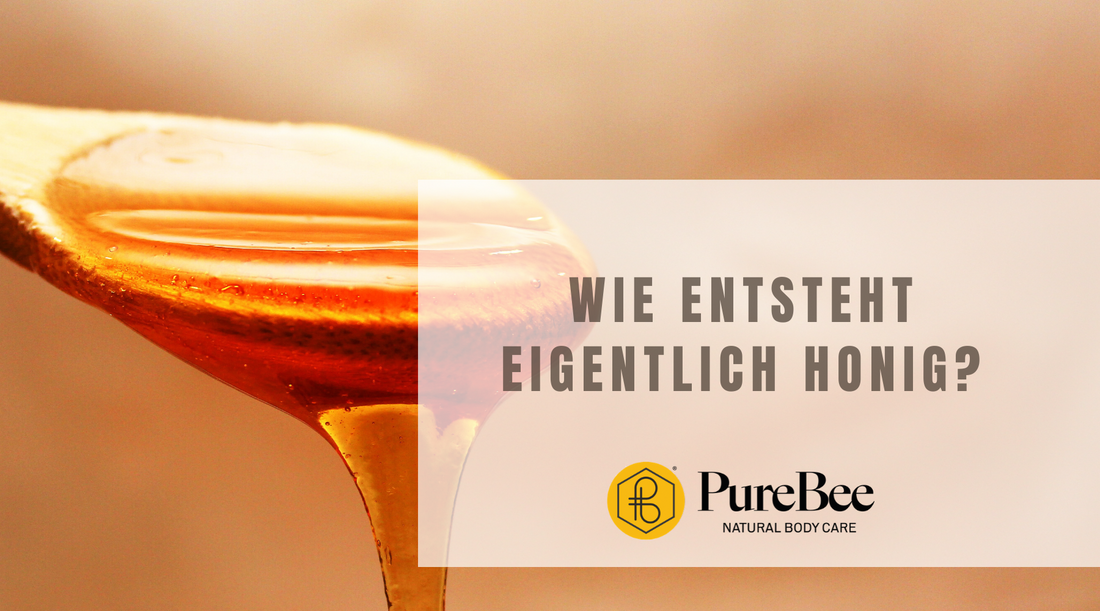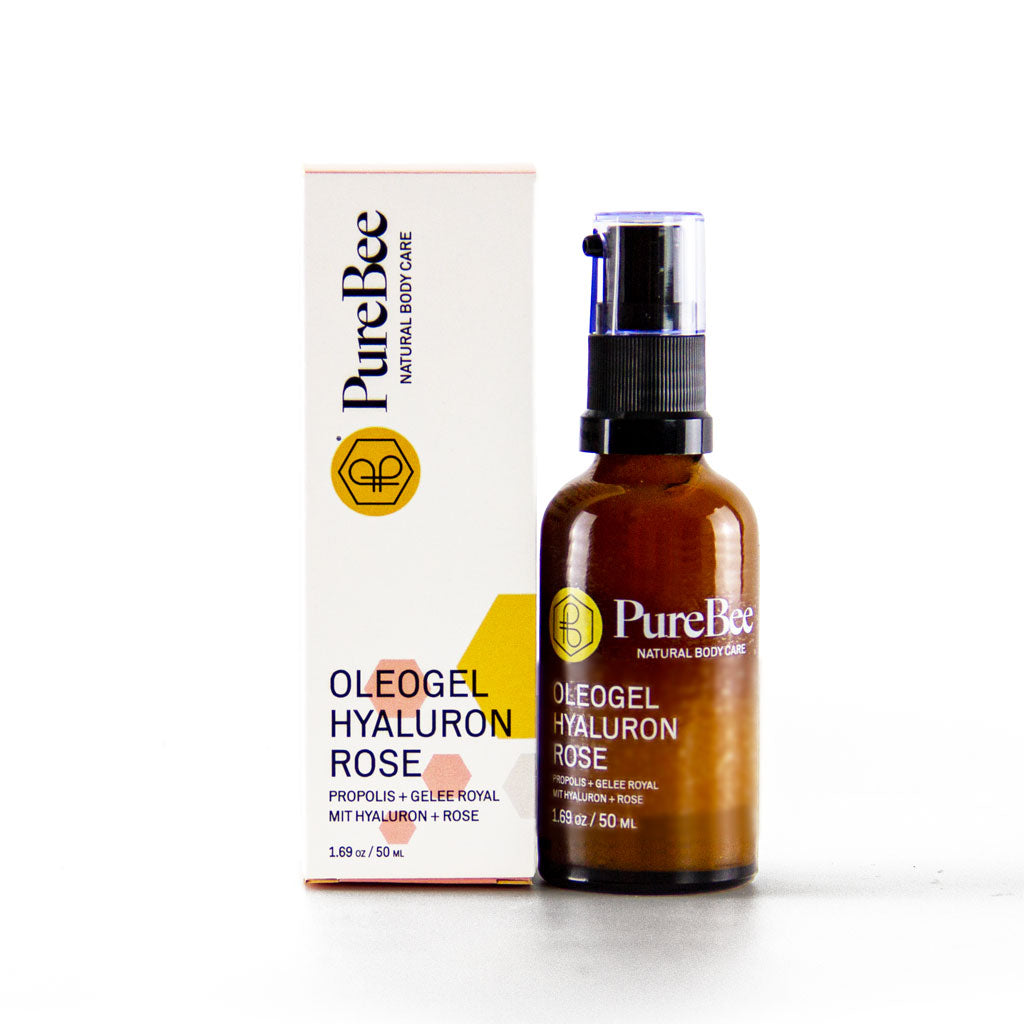Unfortunately, honey is mostly a very underestimated food these days. You can find it cheaply and in many forms on the supermarket shelf and we particularly enjoy it on our breakfast sandwiches. However, if you delve deeper into the subject, you will learn a new appreciation for honey. You can then understand why a beekeeper charges the sometimes much higher price than in the supermarket and what work goes into it. In this article we will go a little deeper and deal with the questions: What is honey and how is it made? Why do bees produce honey at all? What varieties are there? And many more.

This is how honey is made
Share
Honey - a pure, untreated natural product that was of great importance in ancient times
What actually is honey?
The Honey Ordinance ( quote, year 2004, Annex 1, Section 1 under General ) says the following:
"Honey is the naturally sweet substance that is produced by honey bees by the bees absorbing nectar from plants or secretions of living parts of plants or excretions of insects sucking on plants that are on the living parts of plants, transforming them through combination with their own specific substances, storing them, dehydrating them and store it in the honeycombs of the beehive and let it mature.”
If you break down official German, honey is a foodstuff collected by bees, which consists mainly of natural sugar. Honey is actually collected by the bees as a reserve in case there aren't that many flowers or, of course, as food for the winter. The ingredients essentially consist of three pillars: the plant nectar, the animal honeydew and the substances that are added by the bees during further processing.
Man made food for himself from the bees' food very early on and honey still has a firm place in a balanced diet today - despite the sugar.
How is honey made?
The fly out
In Germany, the delicious honey that we spoon out of the jar is primarily thanks to the hard work of the western honey bee ( Apis mellifera ). While arithmetic geniuses differ somewhat over the exact numbers, even if they were halved, the feats of these tiny insects are unimaginable. In purely mathematical terms, a single bee would have to fly 20,000 flights to collect around one liter of honeydew, or nectar. This liter yields about 150 grams of honey, as we know it from the jar. Assuming that a bee has around 40 flights a day, it visits around 4,000 flowers. This means that around 10 million flowers have to be visited to produce one liter of honey.
Collecting
As soon as the forager bee leaves the hive, it heads for flowers and trees. Here it picks up the nectar or honeydew with its trunk. Even while sucking it up, she puts saliva on her collected material and thus adds her own enzymes to it. This is the first special feature: it is only through these enzymes that the plant sap can be converted into honey in the first place. During its journey, the bee stores all the collected material in a special bladder, which is also called the honey stomach. It's roughly the size of a pinhead. When it returns, it gives most of the collected nectar to the hive bees, while it eats a small portion directly itself.
the tire
Although the forager bee adds enzymes directly to the nectar, it is far from finished honey, it is still unripe. In this fresh stage it still gets too much water, the consistency is still very runny and if you stored it like this it would spoil. So that it loses its water as quickly as possible, the hive bees constantly rearrange it. They let the honey run out of their snout into honeycombs and immediately suck it up again. Due to the high temperatures inside the hive and the tireless work of the hive bee, the water evaporates relatively quickly and an almost ripe honey is produced. This is now stored in the honeycomb cells and the bees fan the honey further with their wings so that the remaining moisture evaporates. This is how the typical honey slowly develops. If it has matured enough, the cells are completely filled and sealed with wax caps.
Incidentally, science does not yet know how the bees know when exactly the honey is ready to be sealed. Each nectar dries differently and there is no specific time frame for a honey to mature.
How is honey harvested?
To harvest, the honeycomb must first be freed from bees. If bees that are sitting on the combs are taken into the centrifugal chamber, this can have unpleasant consequences. The bee sitting on the honeycomb flies back to her colleagues, telling them where the food is now, and the other forager bees set out to get their honey back.
So we carefully but thoroughly sweep the bees off the combs. The free honeycombs are then packed into empty loot boxes on rollers and rolled into our spinning room. Here we uncap the combs and throw out the honey. This work has to be done relatively quickly, since the combs must not cool down and should, if possible, keep the temperature of the hive. Otherwise the honey will become firmer and can hardly be spun out of the honeycomb.
The crystallization
After centrifuging, the honey begins to crystallize relatively quickly. This is not bad and is a completely natural process. However, in order to slow down the crystallization a little, we stir the honey a few times for several hours. You can find out more about this in our blog post "Why is my honey crystallizing?"
Difference between creamy and clear honey
Fresh honey from the extractor is always golden clear and runny, but sooner or later it will begin to crystallize. How quickly it crystallizes depends on the glucose content, with some varieties this happens very quickly and with others it can take several months.
Difference between forest honey and blossom honey
To put it simply, honey can be divided into two classes. On the one hand blossom honey and on the other hand honeydew honey, also called forest honey. The basis for blossom honey is nectar, which is collected from blossoms. Honeydew honey's origins can be found on needles and tree leaves. With honeydew honey, bees collect the tiny excrements from the insects that get their food from the plants and convert them into honey. A mix of both is the forest and blossom honey, which contains parts of both. Since our bees are right on the edge of the forest, we often have a higher proportion of honeydew honey in the jar or bag.
Which honey is the best?
In a global comparison, the Germans are at the forefront when it comes to honey consumption. In purely mathematical terms, each of us consumes over a kilogram of honey a year. It is difficult to say which is the most popular type of honey. The approximately 150,000 beekeepers with a total of around 1,000,000 bee colonies in Germany are not able to cover the demand. Only 20 percent of annual honey consumption can be covered by German bees. A large part of the missing 80 percent is imported from China, Brazil and Eastern Europe.
Of course, we recommend everyone to buy their honey from a regional or German origin if possible, there is no limit to taste. Whether blossom honey, rapeseed honey, forest honey, linden honey or other local varieties is up to you. From an ecological point of view, however, it makes no sense for us to send honey halfway around the world, which then also comes from countries where beekeeping and working conditions for people are questionable. We are rather critical of the hype about exotic types of honey, such as Manuka honey, which is imported from New Zealand, which is why we refrain from including such honey in our range despite many inquiries.

